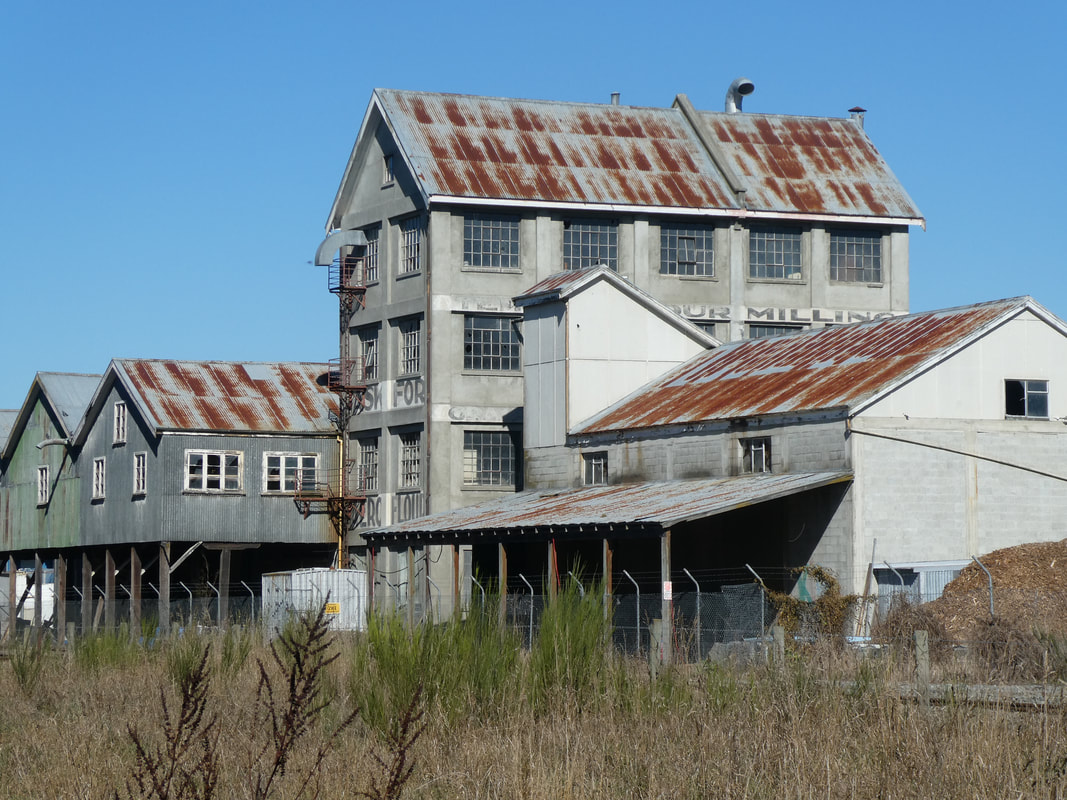|
Most towns in wheat growing areas had their own local mills and Temuka is no exception. The Temuka Flour Milling Company was formed in 1924 by a consortium of farmers and prominent businessmen and later that same year a contract was granted to a Timaru Building firm, W J Harding ( also a director of the company), to erect the four storey edifice, at the time the tallest building in Temuka. The mill building is a reinforced concrete structure with a basement and 3 storeys above ground. Adjoining the mill is a two storey building erected for the storage of bagged wheat, straight from the farms. The mill is powered by a 50hp electric motor of Swedish design; however, as electricity didn’t reach Temuka until 1925 this meant completion of the mill was delayed till they were able to flick the switch on! The plant processed wheat delivered from all over the region into flour, by 1936 this was about five sacks per hour; it also produced bran and pollard. Originally the wheat was transported by horse and dray. After delivery the dry wheat went through a screening and pre-cleaning process before milling, the resulting flour was then delivered in sacks and white cotton cloth bags to grocery shops and bakeries in bag sizes as required. Temuka Milling Company had its own registered brand, AERO. Horse drawn drays were later replaced with motorised trucks and in the 1960’s there was a progressive move into bulk handling and silos were built, this reduced the need for the extremely heavy manual work in receiving and stacking thousands of sacks annually. Hefting the sacks around was hard work, the jute sacks each held three to four bushels which equates to 80-108 kgs dead weight. Siting of the mill right alongside the main north/south railway line was to prove a boon in later years when flour from the mill was shipped to the North Island. Diversification in the 1960’s/70’s led to production of poultry pellets from mill by-products and lucerne in a further separate building. The mill operated continuously and successfully until 1989 when it closed for a short period. After that several other owners had an interest in the mill but early in the 21st century it finally closed its operation for good.
1 Comment
Averil MEADLARKIN née SMART
29/3/2024 01:32:12 pm
My Grandfather ran the MIll from 1930 till the late1940?
Reply
Leave a Reply. |
View by date Archives
February 2021
Categories |
|
|




